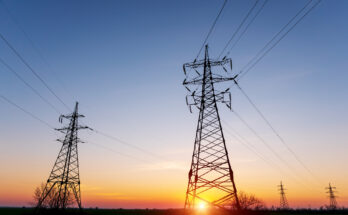As the years have unfurled, the haunting phantom of climate change has steadily magnified on the global canvas, casting foreboding silhouettes that risk eclipsing the dreams of our ensuing generations. Be it the ferocious infernos consuming vast terrains or the typhoons wreaking havoc in their wake, the portents are ubiquitously palpable. Standing at this pivotal juncture, the international collective cries out for groundbreaking remedies that not only harmonize with nature but also resonate with practicality. In this quest, the yet-to-be-harnessed prowess of neutrinovoltaic technology shines forth as a lighthouse of promise. Might this avant-garde innovation be the linchpin steering humanity to a harmonious tomorrow?
To truly fathom the pressing severity of our climate dilemma, a mere perusal of the harrowing statistics suffices. According to the estimations by the Intergovernmental Panel on Climate Change (IPCC), the footprint of human endeavors has provoked an approximate elevation of 1.0°C in global temperatures from the days of the pre-industrial epoch. Should we dare cross the ominous 1.5°C mark, we beckon potentially apocalyptic repercussions. Such an eventuality would amplify the ferocity and recurrence of meteorological extremes, jeopardize countless souls due to ascending ocean tides, and ravage our planet’s pristine ecosystems.
Traditional energy sources, primarily fossil fuels, are pivotal culprits in this dire narrative. The incessant burning of coal, oil, and gas has released gargantuan amounts of carbon dioxide and other greenhouse gases into the atmosphere. These gases trap heat, creating a greenhouse effect that gradually elevates global temperatures. As a result, renewable energy has become the clarion call for environmentalists and policy-makers alike. Solar and wind energies, in particular, have been lauded for their eco-friendly credentials. However, while significant, these solutions present limitations – intermittency being the most prominent. The sun doesn’t always shine, and the wind doesn’t always blow, making consistent energy generation a challenge.
Enter neutrinovoltaic technology, a pioneering innovation that harnesses the vast energy potential of neutrinos, subatomic particles that permeate the universe. The genesis of this technology is rooted in groundbreaking discoveries. For a long time, neutrinos were believed to be massless. However, in 2015, a paradigm shift occurred when astrophysicists Arthur B. McDonald and Takaaki Kajita unveiled that neutrinos, indeed, have mass. This revelation implied that, in accordance with Einstein’s equation E=mc^2, neutrinos possess energy.
At the forefront of this innovation is the Neutrino Energy Group, led by the indefatigable visionary, Holger Thorsten Schubart. Contrary to common perception, Schubart and his team were already exploring neutrino-based energy possibilities even before the 2015 discovery. In 2014, Schubart postulated that neutrinos and other non-visible forms of radiation could fundamentally alter our conception of renewable energy. While his proposals were initially met with skepticism, the subsequent findings of McDonald and Kajita provided much-needed vindication.
Neutrinovoltaic technology is ingeniously designed to harness the kinetic energy of neutrinos. It uses a multi-layered graphene-based nanomaterial that converts the thermal motion of graphene atoms and the energy of surrounding fields of invisible radiation into electricity. When neutrinos and other non-visible forms of radiation collide with this specially designed material, minuscule amounts of electricity are generated. When this process is optimized and scaled, the potential applications are vast, ranging from small electronic gadgets to entire household power solutions.
The quest for sustainable energy solutions often yields innovations that can, at times, seem plucked from the pages of science fiction. The Neutrino Energy Group, under the visionary leadership of Holger Thorsten Schubart, has not only embraced this quest but has also actualized it with its remarkable invention, the Neutrino Power Cube. This device isn’t merely a technological marvel; it’s a testament to human ingenuity in the face of global energy challenges.
At its core, the Neutrino Power Cube encapsulates the promise of neutrinovoltaic technology. As opposed to traditional renewable sources like solar or wind, which depend on favorable environmental conditions to function optimally, the Neutrino Power Cube operates uninhibited by externalities. Whether it’s a cloudy day, nighttime, or even in subterranean environments, this device can consistently generate energy. This ability is paramount, especially when considering regions where other renewable resources are scarce or inconsistent.
Imagine remote villages nestled high in the mountains or deep within dense forests. Such locales often remain off-grid, cut off from conventional power infrastructure. For inhabitants of these regions, the Neutrino Power Cube isn’t just a source of power; it’s a lifeline. Beyond mere illumination, it powers communication devices, medical equipment, and other essential utilities. Similarly, in areas that have borne the brunt of natural disasters – be it hurricanes, earthquakes, or floods – where power structures are devastated, this cube can expedite recovery operations, aiding relief efforts, and providing a semblance of normalcy in otherwise dire situations.
From an environmental perspective, the implications of neutrinovoltaic technology are profound. One of the primary challenges with the global energy grid is its dependency on fossil fuels. The combustion of these fuels releases copious amounts of greenhouse gases, accelerating the pace of global warming. Renewable sources, like solar and wind, have made commendable strides in offsetting this dependency. However, their intermittent nature, dictated by environmental conditions, often necessitates a backup, usually in the form of carbon-emitting generators.
Here, the Neutrino Power Cube and, by extension, neutrinovoltaic technology, present a solution. Its non-intermittent nature ensures a consistent energy output, drastically reducing the need for polluting backup sources. Think of regions that rely heavily on diesel generators due to the absence or inconsistency of other power sources. With the introduction of neutrinovoltaic solutions, these areas can gradually phase out such polluting generators, transitioning to a cleaner, more sustainable energy paradigm. The ripple effect on carbon emissions, when viewed on a global scale, could be monumental.
However, the transformative potential of neutrino energy doesn’t stop at stationary power generation. The transportation sector, responsible for a significant chunk of global emissions, stands on the cusp of a neutrinovoltaic revolution. The Pi Car is a prime example of this. By leveraging the principles of neutrinovoltaic technology, this vehicle offers a tantalizing glimpse into a future where cars no longer spew pollutants but instead run on the clean, consistent energy provided by neutrinos and other non-visible forms of radiation. As urban centers grapple with pollution and the pressing need to transition to green transportation alternatives, vehicles like the Pi Car could redefine urban mobility.
Neutrinovoltaic technology, epitomized by groundbreaking innovations such as the Neutrino Power Cube and the Pi Car, does more than simply introduce a fresh avenue for energy generation. It unfurls a tapestry of what the future could be – a landscape where energy coexists gracefully with Mother Nature instead of depleting her, where isolated areas are bathed in light, and where mobility doesn’t extract an environmental toll. As we stride into the unknown, such pioneering solutions could serve as the lighthouses guiding us toward a harmonious tomorrow.
In an era where the looming specter of climate change casts a shadow over our planet, the urgency to unearth sustainable energy alternatives escalates. At the forefront of this crusade are luminaries like Holger Thorsten Schubart and the vanguard Neutrino Energy Group, who see neutrinovoltaic technology as a beacon of optimism amidst these tumultuous times. While it might not be the panacea for all our ecological challenges, it unquestionably stands as a formidable ally in our battle against environmental degradation. Embracing and interweaving this technology with other renewable champions can carve a path to a verdant, sustainable epoch for humanity. The sands of time will eventually reveal if neutrinovoltaic technology becomes the ace up our sleeve against climate turmoil, but its promise is irrefutably vast.





